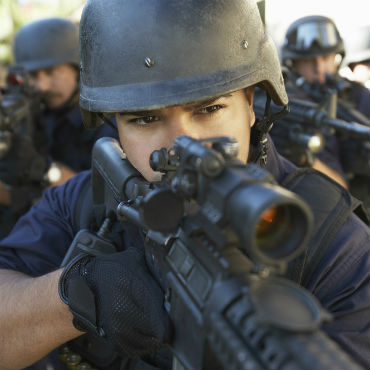Justice Department putting smart guns to the test

The National Institute of Justice is conducting a smart gun technology challenge and asking for feedback on ways such tech could be integrated into federal law enforcement firearms.

The Justice Department's research and development agency is asking gun safety companies and the public to help it better understand how smart firearm technologies could be incorporated into federal law officers' handguns.
On July 15, the National Institute of Justice issued draft baseline specifications for how law enforcement service pistols would be equipped with security technology.
At the same time, the research agency is running a smart gun technology challenge through August in Maryland in which it is asking smart gun manufacturers for objective demonstrations and tests of existing smart guns, user-authorized handguns, childproof guns, and personalized firearms and associated accessories.
Generally, smart guns incorporate user-authentication technology so that they can only be fired by their rightful, electronically identified owners. Some guns also have electronic recovery technology that makes them easier to locate if they're lost or stolen.
NIJ's draft specifications apply to a specific set of semi-automatic weapons that are widely used by federal law enforcement agencies.
Officials hope that the testing challenge, conducted at the Army Aberdeen Test Center in Maryland, will give them a better understanding of whether smart gun technology measurably improves safety.
The draft specification notice and the challenge at Aberdeen are in response to President Barack Obama's January memo asking federal law enforcement agencies to investigate how smart gun technology might work and report on their findings.
In April, the departments of Justice, Homeland Security and Defense submitted a joint report to the president that outlined a strategy to put the deployment of gun safety technology on a fast track for federal service weapons and to incorporate the technology into firearm design.
The report describes the potential benefits of advanced gun safety technology but said additional work is needed before the technology is ready for widespread adoption by law enforcement agencies.
In particular, the report stresses the importance of integrating the technology into a firearm's design without compromising the reliability, durability and accuracy that officers expect from their service weapons.
NEXT STORY: Let's put the 'funded' back in FFRDC





